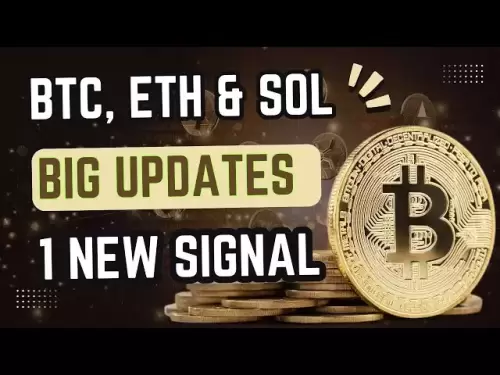 |
|
 |
|
 |
|
 |
|
 |
|
 |
|
 |
|
 |
|
 |
|
 |
|
 |
|
 |
|
 |
|
 |
|
 |
|
Cryptocurrency News Articles
The stablecoin transaction world is moving quickly, and new data offers a surprising look at how various blockchain networks are being employed to transfer value.
May 17, 2025 at 01:29 pm
Notably, while Ethereum and Tron continue to fulfill the roles of primary network and infrastructure providers, newer entities such as Mantle and Sui are quickly distinguishing themselves, especially when average stablecoin transaction sizes are considered.

The world of stablecoin transactions is quickly changing, and new data offers a surprising look at how various blockchain networks are being employed to transfer value.
While Ethereum and Tron continue to fulfill the roles of primary network and infrastructure providers, respectively, newer entities such as Mantle and Sui are quickly distinguishing themselves, especially when average stablecoin transaction sizes are considered.
Stablecoin adoption keeps on expanding, recently reported statistics from CrytoRank and SentoraHQ state. However, while each network is clearly making strides, the CryptoRank and SentoraHQ reports highlight that these networks are doing so in different ways. Some show more strength in transaction volume. Others show more strength in transfer size. Still, others show strength in user base, which in this case is represented by the number of user addresses.
Ethereum Leads in Transfer Size, Base and Tron in Pursuit
According to the latest report from CryptoRank, Ethereum is still heading the pack in terms of average stablecoin transaction size. The network registers a stunning average of $68,000 per transaction, which places it heads and shoulders above the other networks in this regard. That figure suggests that Ethereum is still very much the layer-1 network of choice for high-value users, institutions, and DeFi protocols.
Following closely behind is Base, a Layer 2 solution developed by Coinbase. It has managed to secure a strong place in the market with an average transaction size of $20,000, which is quite incredible for a relatively new solution. Tron, which is best known for its ultra-low transaction fees and efficiency, ranks next with an average of $8,900 in stablecoin transfers.
Mantle and Sui lead in stablecoins transaction size
Ethereum is still leading the way with an average stablecoin transaction size of $68K. @base is in second place with $20K in average transaction size, while Tron follows with $8.9K.
What’s really interesting is that Mantle and Sui are quickly catching up. Mantle's average transaction size is $6.8K, and Sui's is $5.8K, which puts them ahead of Optimism and Arbitrum. This is surprising because Optimism and Arbitrum are usually the main focus for scaling solutions on Ethereum.
Those figures are noteworthy because they highlight how different blockchain networks are catering to diverse user behaviors and preferences. For instance, Tron's vast user base and unmatched volume of $623.9 billion in the past 30 days, as reported by SentoraHQ, are a testament to its role in facilitating a high volume of smaller transactions, particularly in emerging markets where lower transaction fees are crucial.
On the other hand, Ethereum's transactions are typically larger in size, reflecting its role in facilitating institutional-grade transactions and DeFi activity, which usually involve more significant sums of money. This is also supported by the fact that 75% of the active USDT addresses are on Tron, highlighting its strength in terms of user footprint.
The presence of decentralized finance platforms and their high-yield protocols could be leading to development of larger transaction volumes from active traders and institutions across both networks. Whether this influx of cash is sustainable or merely a flash in the pan remains to be seen.
Tron Dominates USDT Adoption with Unmatched Volume and User Base
While Ethereum may lead in value per transaction, Tron continues to be the dominant network in terms of total USDT volume and user adoption. According to the latest report from SentoraHQ, Tron has processed a staggering $623.9 billion in stablecoin volume over the past 30 days. This is a testament to its role as the preferred network for USDT transactions, especially in regions where low fees are critical.
According to the latest report from SentoraHQ (previously IntoTheBlock), Tron is the most widely used network for USDT, having processed $623.9 Billion in volume in the past 30 days.
This incredible statistic showcases Tron's dominant role in facilitating USDT transactions. It's also worth noting that Tron accommodates more than 57 million USDT addresses, which makes up over 75% of all active USDT addresses in the world. This colossal user base illustrates Tron’s exceptional standing as a network that’s friendly to retail transactions. More than any other network, Tron is a place where everyday payments, cross-border transactions, and peer-to-peer transfers—especially the kinds of transactions that developing markets carry out—take place.
The efficiency, high throughput, and minimal fees of Tron have made it the choice for speed and cost-effectiveness in the movement of stablecoins—especially in transactions outside the traditional banking system.
This new report from CryptoRank and the data from SentoraHQ offer a unique glimpse into the diverse landscape of blockchain networks and how they're being utilized for different aspects of the crypto ecosystem. As the industry continues to evolve, it will be interesting
Disclaimer:info@kdj.com
The information provided is not trading advice. kdj.com does not assume any responsibility for any investments made based on the information provided in this article. Cryptocurrencies are highly volatile and it is highly recommended that you invest with caution after thorough research!
If you believe that the content used on this website infringes your copyright, please contact us immediately (info@kdj.com) and we will delete it promptly.
-

-

- Shiba Inu (SHIB) Has Always Been a Coin of High Dreams and Wilder Speculation
- May 17, 2025 at 05:05 pm
- Shiba Inu (SHIB) has always been a coin of high dreams and wilder speculation. With its fanbase aiming for $0.01 or even $1, the question resurfaces: can SHIB hit that dream mark by July 1, 2025? Let's break down the reality based on the latest charts.
-

-

-

-

-

-

-





























































